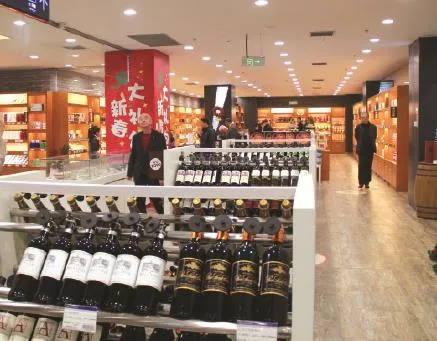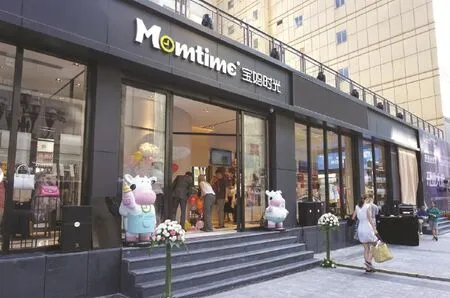Sounding the bugle for “One Belt and One Road” Initiative,Chongqing to Be Built into A Key Node City
□ Written by Zeng Rui
Sounding the bugle for “One Belt and One Road” Initiative,Chongqing to Be Built into A Key Node City
□Written by Zeng Rui
On August 5, Chongqing, a city actively engaged in the building of inland leading areas of opening up, once again sounds the bugle for the "One Belt and One Road" initiative. On that day, the Thirteenth Five-Year Plan on the Development of Business Service Industry in Chongqing (herein after referred to as the Plan) was released, offi cially setting forth the objective of building Chongqing into a key node city of “One Belt and One Road” and a modernized business center in upper reaches of the Yangtze River.
“The goal set in the Plan is to build Chongqing into a key node city of ‘One Belt and One Road' and a modernized business center in upper reaches of the Yangtze River”, said by Lai Jiao, the deputy director of Chongqing Commerce Commission. To achieve such a goal, the total retail sales of consumer goods of Chongqing will have to reach 1 trillion RMB, an annual increase of 10%. Thus, Chongqing needs to adhere to the policy of opening up, fully engage in the “One Belt and One Road” initiative and the building of Yangtze River Economic Belt and open wider both internally and externally in the business sector. Taking the China-Singapore (Chongqing) Demonstration Initiative on Strategic Connectivity as an opportunity, Chongqing will speed up the development of ten strategic rising service industries to lead the rapid growth of modern commercial service industry. As per the city's overall objective of establishing an all-round affluent society, a new leap is taken forward in the development scale of commercial service industry, high-end level of development is achieved and the legalization of business environment has been greatly improved. When Chongqing is built into a key node city of “One Belt and One Road” and a modernized business center in upper reaches of the Yangtze River in 2020, its total retail sales of consumer goods will reach 1 trillion RMB, an annual increase of 10%; the total sales of consumer goods will add up to 3.4 trillion RMB, an increase of 12%; business turnover of the accommodation and catering industry will exceed 250 billion RMB, an increase of 13% and the commercial value added will reach 250 billion RMB, accounting for more than 10% of the regional GDP.

Actively utilizing Chongqing to open platforms
Situated at the node point of “Y” shape formed by the “One Belt and One Road” and the Yangtze River economic belt, Chongqing boasts the advantages to accomplish the Plan. The Chongqing-Sinkiang-Europe International Railway, which leads to Duisburg of Germany, the European goods distribution center, provides a new logistics solution for foreign trade enterprises. It takes only 13 days for goods transportation between Europe and inland China. As a hub of land, sea and air transportation with three A class ports and corresponding bonded areas, Chongqing can avail itself of the favorable conditions for foreign trade development.
As is stated in the Plan, explorations will be made to establish "made in Chongqing" exports exhibition sales marts and logistics distribution centers along the Chongqing-Sinkiang-Europe International Railway and in emerging markets in Latin America, Africa and etc. A number of integrated service platforms for cross-border e-commerce, which can connect both domestic and international market, will also be developed.

The already established multiple open platforms, featuring the integration of land, sea and air transportation, three A class ports and three bonded areas, are of great significance to building Chongqing into a key node city of "One Belt and One Road". It is clarified in the Plan that a commodity circulation structure with large inbound and outbound volumes is to be built. Based on the open platforms, a national key hub of commerce logistics, an international logistics distribution center in inland China, an imported products distribution center in Western China and a large-scale regional market cluster will be established in Chongqing, thus forming a new structure of commodity circulationwith large volumes of trades and circulations and large-scale markets. Chongqing will foster 15 commercial and trading enterprises with over 10 billion annual income, 3 domestic and foreign trade integrated enterprises with 50 billion annual income and 15 great markets with over 10 billion business volume, significantly increase the ratio of freight turnover of goods outside the city to that of the goods in Chongqing and strengthen its concentration and radiation capacity as a modern trade center. At the meantime, enterprises in Chongqing will be encouraged to take advantage of these channels to go global. Enterprises in the business service sector will be allowed to make investment in the building of overseas commodity trading center, logistics distribution center, international purchasing and marketing networks, brand presentation center and after-sales service networks.
Prioritizing the development of export-oriented business like cross-border e-commerce
Such typical export-oriented business forms as “e-commerce” and “cross-border e-commerce”, which have been prospering in Chongqing recent years, will see further systematic development. Chongqing will develop consumer platforms featuring integrated development of both online and offline business such as smart business districts, smart markets, smart enterprises and smart communities, thus facilitating the networking, digitization and intelligence of business service industry. By 2020, there will be 15 business districts with over 10 billion retail sales, three of them with over 50 billion retail sales. A cluster of convention and exhibition industry in CBDs and Yuelai International Convention Center will be developed, the direct revenues from which will reach 2.2 billion RMB, and it will stimulate a total consumption of 180 billion RMB. E-commerce turnover will exceed 1800 billion RMB, more than 200 billion of which will be from online sales. Logistics distribution system in the core area and development area of urban functions will be basically established and modernization level of business service industry will be significantly promoted. Chongqing will encourage and accelerate business form innovation through technology, demand and model innovation, drive the transformation of traditional commercial form to experience economy, social platform, leisure center and life center and upgrade traditional commodity market to regional commodities trading hub, distribution center and settlement center. The near future will also see the development of emerging commercial forms such as cross-border e-commerce, exhibition and trading of bonded goods and fi nancial leasing.
On the basis of the above-mentioned, Chongqing will develop a number of specialized markets for imported goods that will have radiation and driving effects in Western China, build a mart of imports from Europe and establish inland distribution, transfer, sales and settlement centers for imported goods.
To be liberated to build a node city
It is believed that, before the introduction of the Plan, Chongqing had made remarkable progress in the building of foreign trading ports, international trade, cross-border e-commerce and international settlement and export-oriented economy was recognized to be an important factor for Chongqing to maintain strong economic vitality. Chongqing's economy is no less exportoriented than that of the coastal and border areas. However, many local experts and scholars hold that, besides infrastructure construction and policy guidance, mind of the public and some enterprises needs to be liberated to build Chongqing into a key node city of "One Belt and One Road".
Doctor Hu Dinghe, deputy president of Chongqing Federation of Industry and Commerce and the chairman of Blue Ocean Financing Group, believes that, situated in western inland area of China, neither close to the border or the ocean, Chongqing needs to overcome three obstacles to really open up to the outside world. First is ideology. As an inland city, traditional basin and inland consciousness is deeply rooted. Were the mind not to be liberated, there would not be enough endogenous dynamics nor space for opening up. The second is logistics cost. There's more than 2000 kilometers between Chongqing and coastal ports. Due to huge time and space distance, high logistics cost has always been the bottleneck for inland development and opening up. Enterprises, as market entities, shall share the responsibility to cut the logistics cost. The third obstacle is in terms of reform innovation. Different from the opening up of coastal areas 30 years ago, the new round of reform and opening up in inland China requires up-down motivation and features many particularities. Innovation and development have to be explored under the current laws and regulations and institutional framework without precedent to be followed. It has not been long for Chongqing to witness the growth of modern business service industry, so practitioners in relevant industries still need to seize the opportunities for development.
- 重庆与世界的其它文章
- 旅游:一座城市面向世界的眼睛
- 第一亿台“重庆造”惠普笔记本电脑下线
- The 100 millionth HP laptop “Made in Chongqing” rolled off the line
- 重庆吹响新号角将建“一带一路”重要流通节点城市
- 重庆口岸建设最新成绩单发布,新增1个一类口岸以重庆为中心的双核口岸群有望成型
- The New Achievements of Chongqing's Port Construction Has Been Published, Adding a New First-class Port Dinuclear Port Group That Takes Chongqing As Center Has the Prospect to Take Shape

